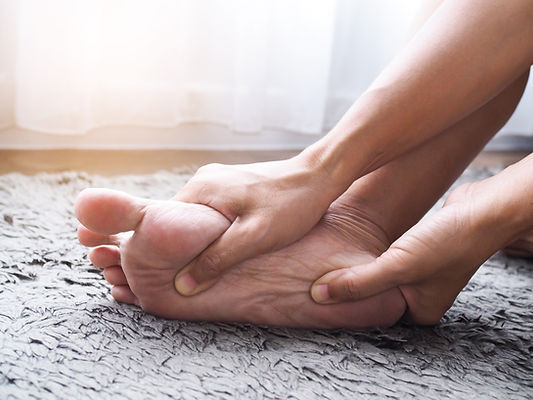Heel Spurs
Bone spurs are a very common foot problem. In the feet, they develop most frequently in the heel, near the toes, and on top of the big toe joint. The spurs are small outgrowths of bone. In and of themselves, they are generally harmless. However, their location may cause friction or irritation from shoes or other foot structures, which can lead to other foot problems.
Heel spurs refer specifically to bone spurs in the heel. Heel spurs are growths of bone on the underside, forepart of the heel bone and occur when the plantar fibrous band pulls at its attachment to the heel bone. This area of the heel later calcifies to form a spur. With proper warm-up and the use of appropriate athletic shoes, strain to the ligament can be reduced.

Anti-inflammatory medications, cortisone injections, corrective shoes, and/or orthotics (special shoe inserts) are some of the common treatments for spurs. Note: Please consult your physician before taking any medication. Surgery may be prescribed if spurring around the joint becomes severe or leads to recurrent pain from persistent corns.


